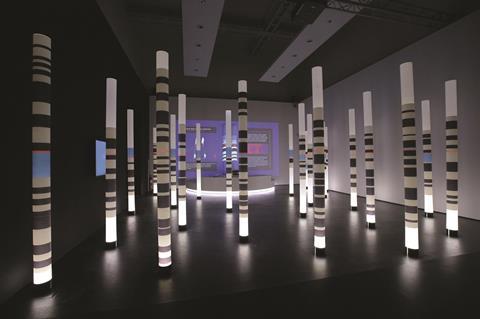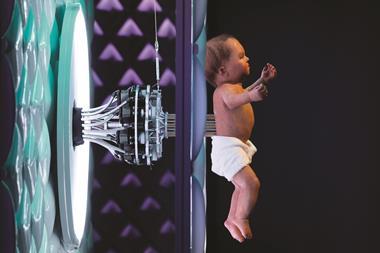Exhibition
Palazzo delle Esposizioni, Rome, Italy
Open 10 February – 18 June 2017
Tickets €12.50 | Available online
‘My time will come,’ said Gregor Mendel at the end his life, according to fellow monks at his monastery in what is now the Czech Republic. He referred to the laws of inheritance he published in 1865, which were ignored at his time.
One and a half centuries after Mendel’s work, the Exhibitions Palace of Rome’s municipality is reviewing the history and applications of genetics in the exhibition DNA: the great book of life from Mendel to genomics, curated by historian Bernardino Fantini, philosopher Telmo Pievani, geneticist Sergio Pimpinelli, and bioethicist Fabrizio Rufo.
The first half of the display is devoted to history. A space that simulates Mendel’s garden hosts memorabilia, like the scientist’s microscope and telescope, and a document signed by Mendel discovered by Fantini in the Vatican archive. Visitors can also play a version of pinball that reproduces conceptually Mendel’s experiments with peas.
The exhibition follows with the account of the ‘century of genetics’, culminating with the Human Genome Project in 2000. Plaster face masks made by the racist anthropologist Lidio Cipriani hang on a wall. Glass cases display historical gems like the typescript of James Watson’s The double helix. A whole room is devoted to the agronomist and forerunner of the green revolution Nazareno Strampelli.
The second half of the exhibition, devoted to applications, starts with the ‘forest of chromosomes’ installation: visitors can choose a chromosome and see on a screen the role of one of its genes. Following this is a room with reproductions of all the species cloned so far. In glass cases lie the bones and mortuary mask of Dolly the sheep, and a gaudy sweater made out of her wool.
The exhibition reviews all genetic applications, from regenerative medicine to gene therapy, CSI to Crispr. Visitors can see a real artificial cornea made in Veneto and check how ugly bananas and lemons were before selective breeding.
Those looking for a popular or cultural history of genetics will not find much. And the display does not delve into the discoveries of epigenetics, which are questioning the weight of DNA in determining phenotype. The full potential of tactile technology is not used much either. But the exhibition’s contents, together with its catalogue and a program of public lectures, provides a unique opportunity to learn or recall the basics of genetics.













No comments yet